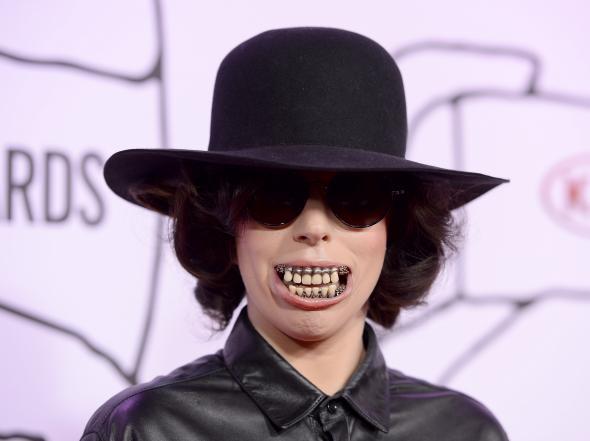The YouTube Music Awards—the Web-giant’s chaotic, Spike Jonze-directed 90-minute foray into the over-saturated world of awards shows—streamed live last night, and is, this morning, as it was always meant to be, available to be watched in its constituent parts. At its peak, about 214,000 people were streaming the spectacle live, meaning most viewers will probably see Lady Gaga’s piano performance, Eminem’s recitation of “Rap God,” and Greta Gerwig dancing to Arcade Fire in a Frances Ha-inflected restaging of Jonze’s famous “Praise You” video as self-contained segments. They’ll therefore miss out on what made the awards show both genuinely original and often unbearable: the formless hosting of Jason Schwartzman and Reggie Watts. The YouTube Music Awards were not just like any other award show, a development theoretically for the good and often for the totally incoherent. I was both impressed by the antic, sloppy, bold proceedings and also hope I never have to watch again—or at least not until they figure out how to mic the thing properly.
The show took place in a giant warehouse, with the hosts, audience, and performers milling around various sets. The vibe was Jonze at his most pared down—a sort of mass-DIY, artsy, feverish, anything-goes production featuring indie-flavored actors, musicians, and a short play by Lena Dunham (it ended with a choose-your-own-adventure double suicide). Schwartzman explained at the outset that there was no script, and the babbling that followed bore him out. He and Watts ran around the space while loosely narrating what was going on: Here Schwartzman was getting his face painted by OK Go, here they were trying to find a winner’s name by digging through cakes, here they were talking to child dancers, here they were noodling on the definition of innovation.
In one exemplary bit, Rashida Jones appeared onscreen carrying two babies. There was maybe an explanation for this, but we couldn’t hear it because the show’s mics never picked her up. She passed the babies on to Schwartzman and Watts and the infants started to wail, or at least that’s what Schwartzman said; you couldn’t hear them either. As Schwartzman and Watts held the infants and tried to talk with Macklemore, who had just won an award (the show’s aesthetic might have been oh-so-hip, but there’s no accounting for voters), every so often a piercing sob would break through the stilted conversation. Schwartzman later apologized for upsetting the babies that were there for no reason and that we could barely hear. This was not an isolated event; the mics didn’t pick much up, including the first 20 or so seconds of Lady Gaga’s performance. The show had no ambient sound, probably because the crowd wasn’t paying much attention to the hosts. It was the rare awards show that seemed like a real cultural event—more fun to be at than to watch.
Awards shows, from the Oscars to MTVs, are all pretty much the same. Famous people appear on a static stage to speak or sing or occasionally walk out into the audience. The YouTube Music Awards demonstrated that there’s a reason for this structure: It may be staid, but it looks good, it sounds good, and it’s easy to control. Seventy minutes into a regular awards show, producers don’t need to air 10 minutes of “behind the scenes” footage to kill time because Eminem isn’t ready to perform. The winners barely mattered, the chatter was floppy and nonsensical but uncanned, and the performances, taking place all over the space, looked great. YouTube, trying to launch a new paid music service, is trying to establish itself as wackier, more creative, and more energetic than MTV. It was probably worth being a little unwatchable to make that point.
